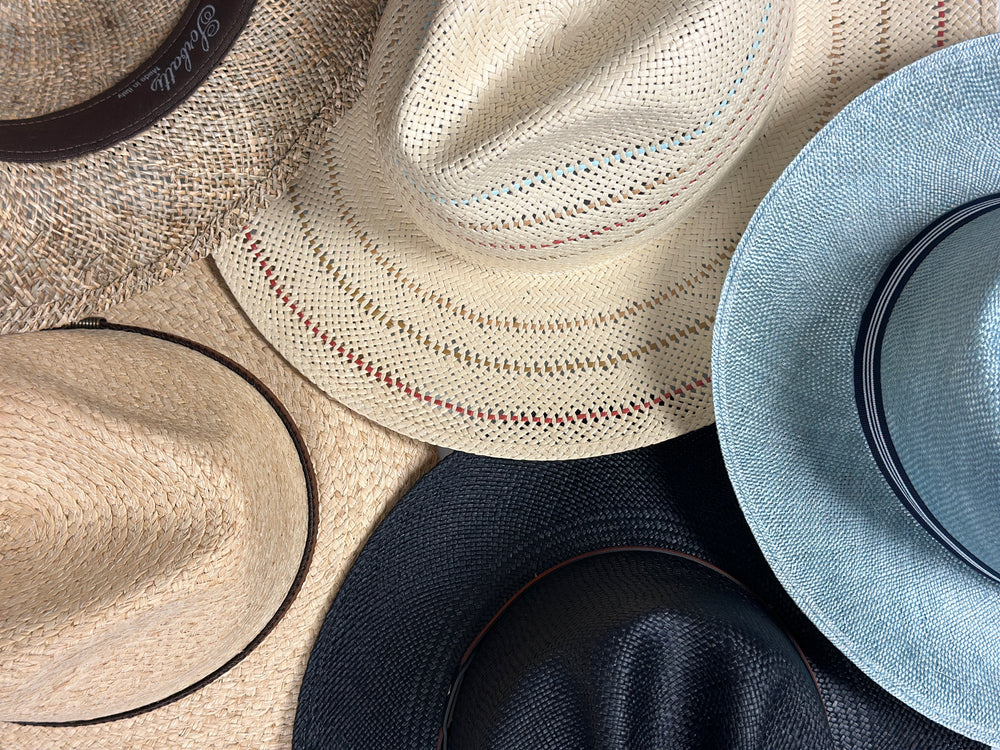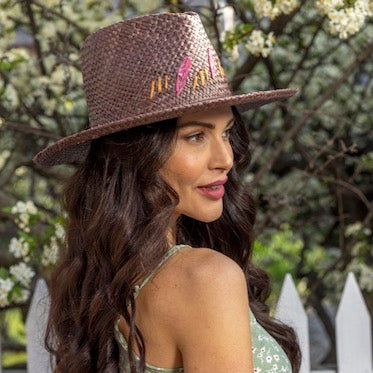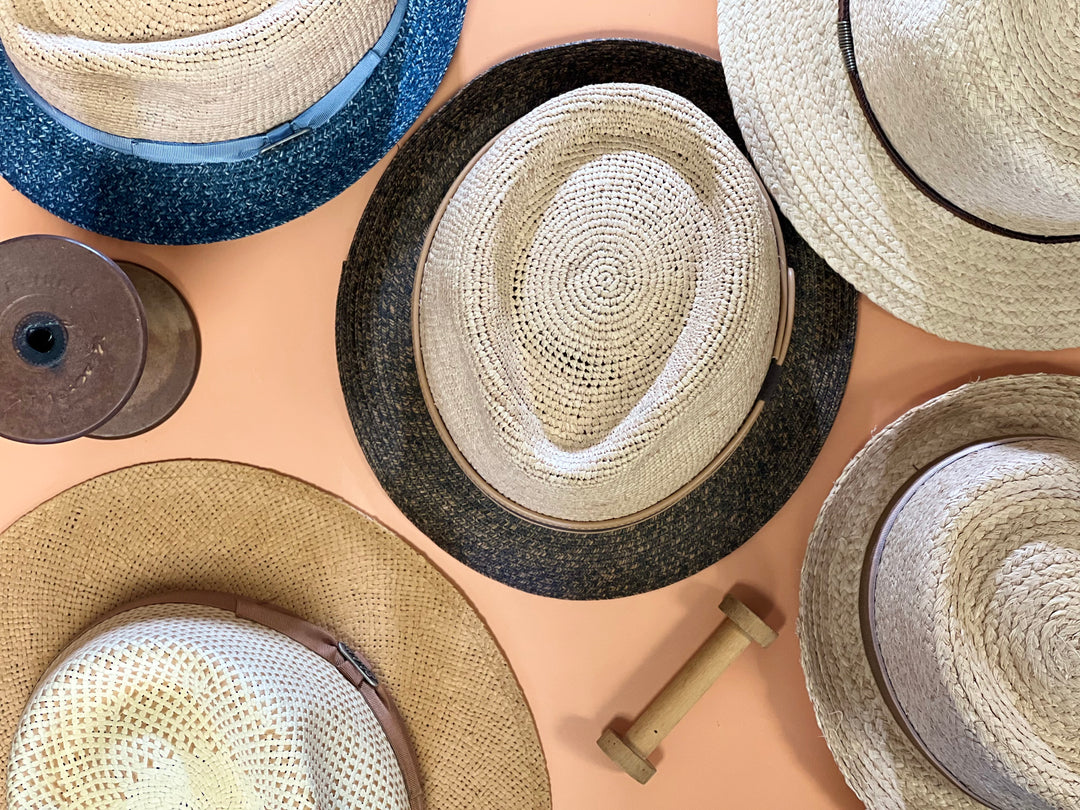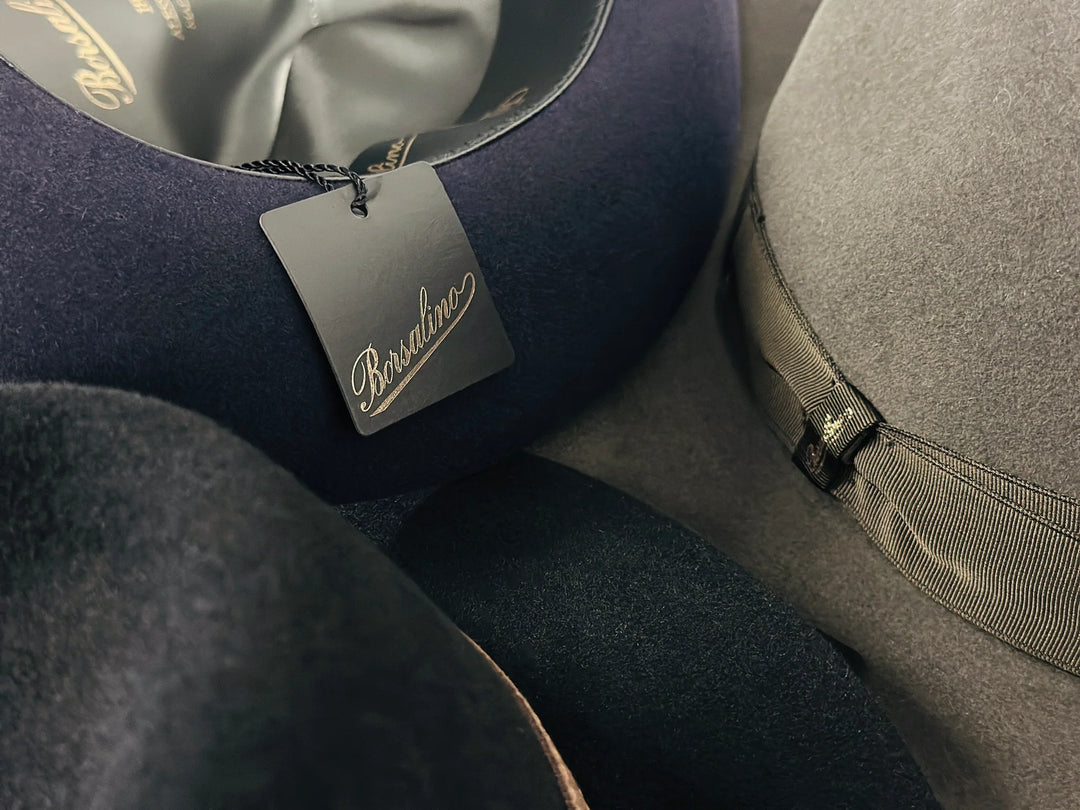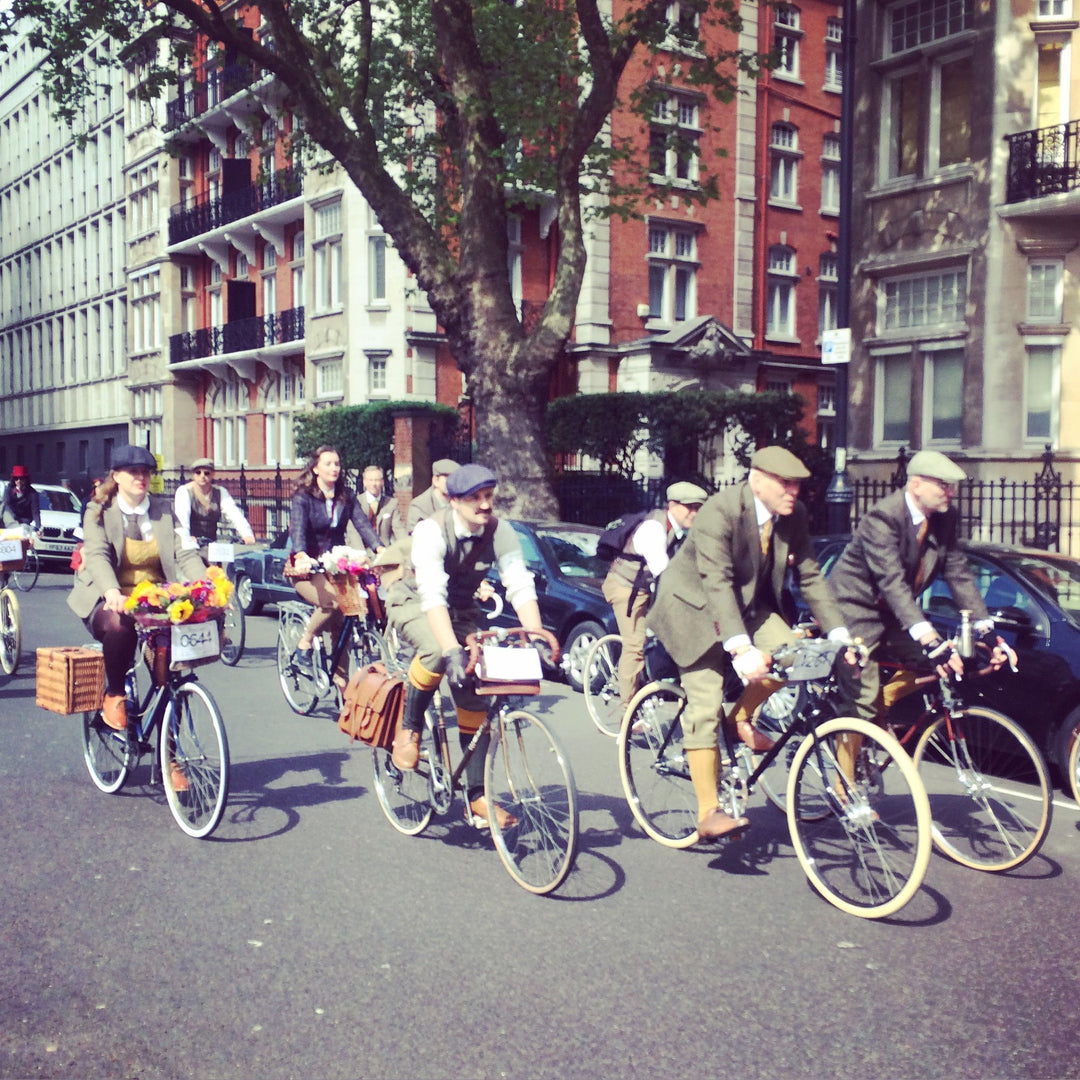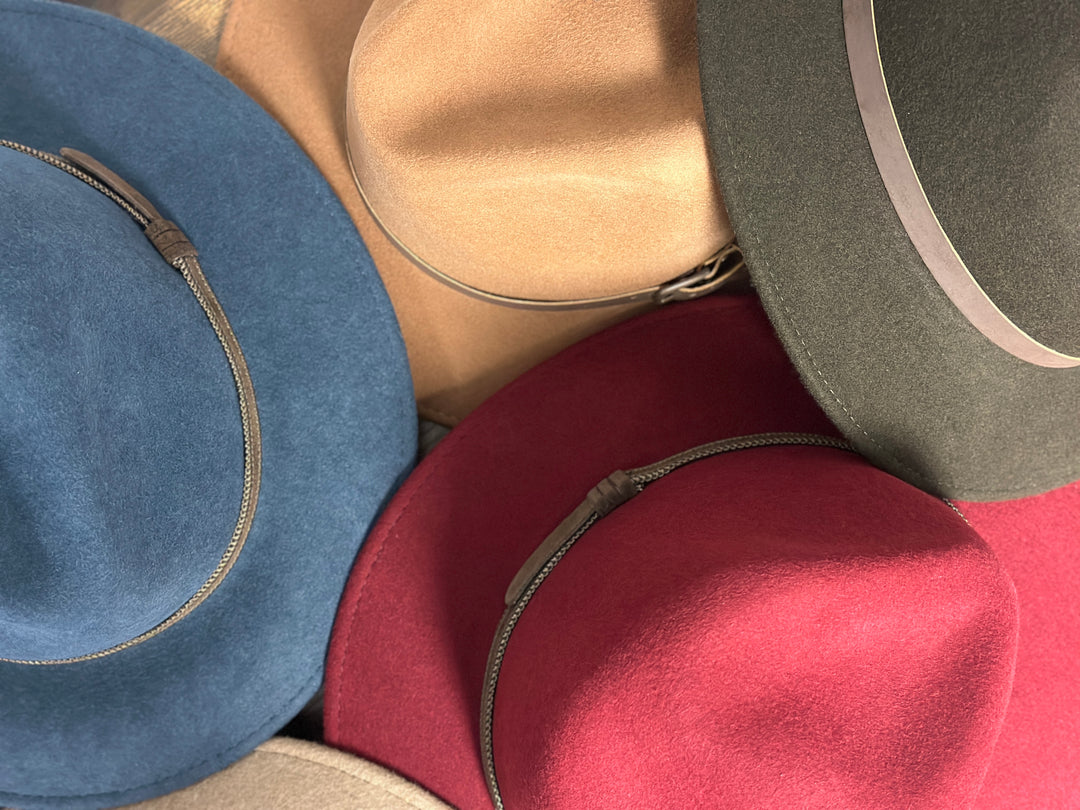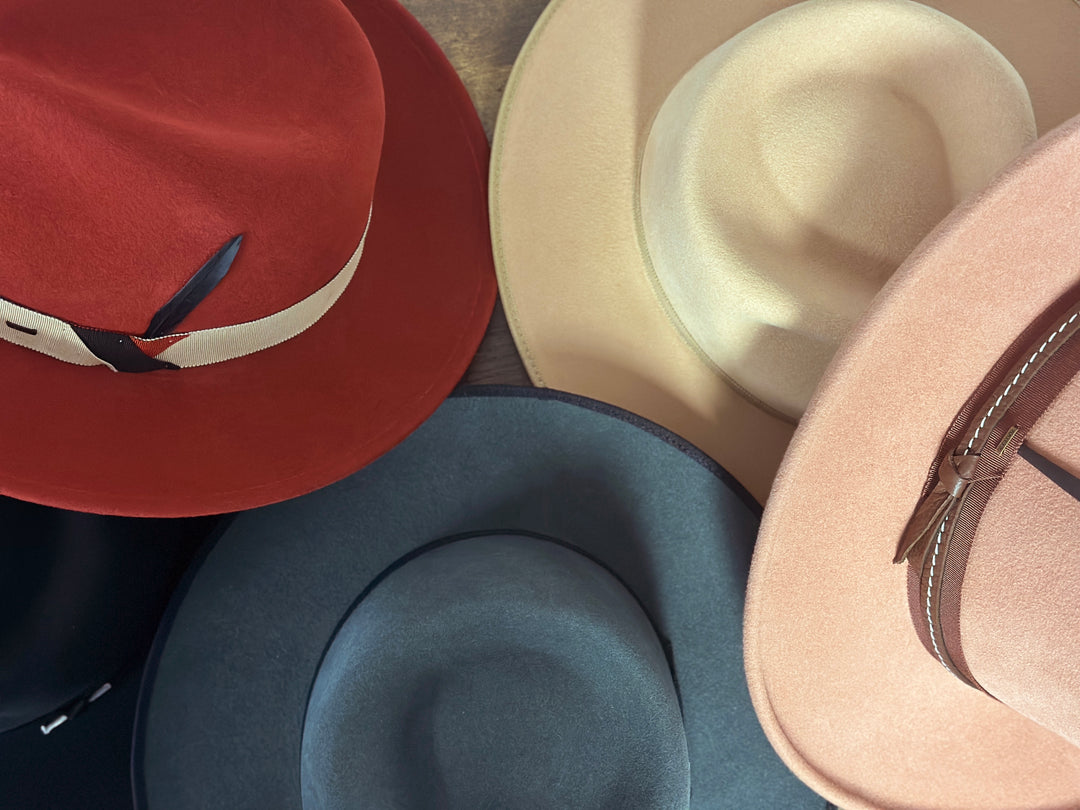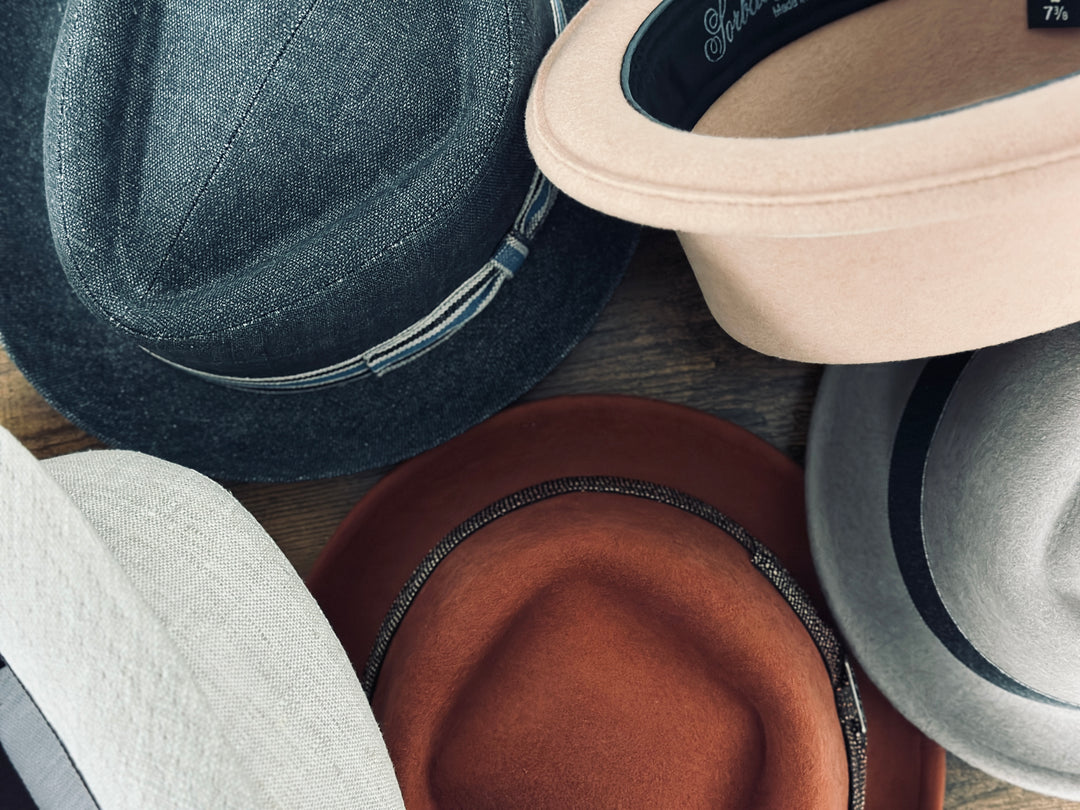When someone refers to a straw hat, the are often referring to a wide variety of materials. It could, of course, be straw what is left over when the seeds are removed from the stalk of any grain plant. This byproduct can be woven into a hat, and this hardy, if expendable, style can be seen the world over from the rural field to the inner city. Toyo straw is another popular material for hats, and is not made from straw at all, but rather from a shellacked rice paper that is then woven into a hat. Toyo straw has some advantages over straw, in that it make for a more refined profile than a straw at the same inexpensive cost, but straw is still hardier and more resistant to wear and tear. More refined materials for straw hat construction include shantung straw hats and of course the classic Panama straw hat.
Aside from being unmistakable elements of style, a straw summer hat has many practical uses as well. Even the stingiest of brims shields the sun from the sun, and the elegantly woven crown of the straw summer fedora protects from the sun, while also remaining well ventilated, keeping your head cool. A properly padded headband will even keep the sweat out of your eyes while you work, or enjoy the summer sun.
I’ve already touched on some of the more inexpensive materials from which a summer hat can be made, but what makes for a really good summer straw hat? In the experience of the author, there are only two materials that you should reach for, and those are Shantung straw hats, and Panama straw hats. Both are extremely fine and durable materials, making them the most handsome and practical choice there is. Shantung and panama straw hats both come in a variety of price points and grades, and are available in a protective coating, which we recommend.
PANAMA STRAW
Panama straw, like many summer straw hats, is not a straw at all. It is made from the leaves of carludovica palmata, which someone once said is “not quite a palm tree.” It has been woven in a very specific and unique style since the seventeenth century in Ecuador, and may not be made any different, or woven anywhere else, if it is to be properly called a panama straw hat. It became popular on the Panama Canal in the late nineteenth and early twentieth century, which is where it got it’s name.
What you should really be looking for when you buy Panama straw hat is the grade of the straw. The very finest of weaves represent hundreds of hours of expert labor, and the grades are usually measured as XX through 100X. Depending on the grade of the Panama straw you can expect to spend hundreds or even thousands of dollars on a Panama straw hat, money which is undoubtedly well spent, and representative of the quality of the straw, the expertise of the craftspeople involved, and the hundreds of years of tradition that the hat represents.
Briefly during the early twentieth century there was a blight that killed many of the carludovica palmata plants from which the Panama straw hat was made, and hat makers everywhere went searching for a substitute. The found Shantung straw, which is in fact a high performance paper that is woven into a yarn to imitate straw. It is very fine, durable, and makes for a great hat for dress and everyday wear. Shantung straw is also an excellent price point for the quality, and should be looked for in any quality summer collection.
Read More:


